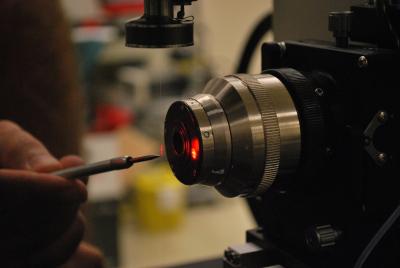A new chemical sensor has been developed by U.S. Army researchers. This sensor is capable of simultaneous real time detection of a large number of agents. This system was reported in a paper released by Optics Letters, the Optical Society's (OSA) journal.

Hearing the telltale sounds of dangerous chemicals
The photoacoustic effect found by Alexander Graham Bell forms the basis of this new system. Identification of even low concentrations of gases can be achieved by adopting a laser and very sensitive microphones within laser photoacoustic spectroscopy (LPAS) technique. These traditional LPAS systems can detect only a single chemical at a time.
Gurton collaboratively designed a sensor ‘photoacoustic cell’ that will foster the development of multi-wavelength LPAS system. The gas being sampled will remain within this cylindrical device. Application of light to the sample will generate a characteristic signal, which will be detected by microphones being built within the device.
A specialized cell was used for this experiment. This cell allows a variety of gases to pass via the device for testing. The entry of five nerve agent mimics’ vapor led to the propagation of three laser beams across the cell. Each of the laser beams showed modulation at varied frequency within the acoustic range.
Multiple "lock-in" amplifiers separate the signals generated by each of the laser. The system was able to detect each of the five gases by examining the results in contrast to a database of absorption information for a series of chemical species.
This optical-based method enables quick detection of agents. This can be achieved when the material under study remains in database and by maintaining a higher level of signal-to-noise ratio.
However, theoretical application of method represents its potential to detect limitless number of chemical agents.
Disclaimer: The views expressed here are those of the author expressed in their private capacity and do not necessarily represent the views of AZoM.com Limited T/A AZoNetwork the owner and operator of this website. This disclaimer forms part of the Terms and conditions of use of this website.